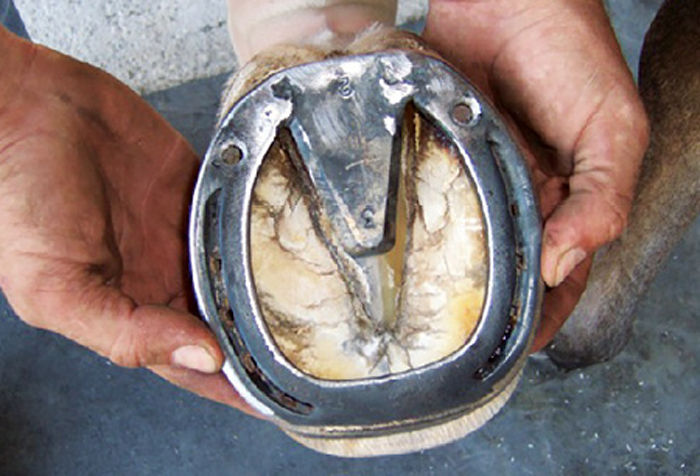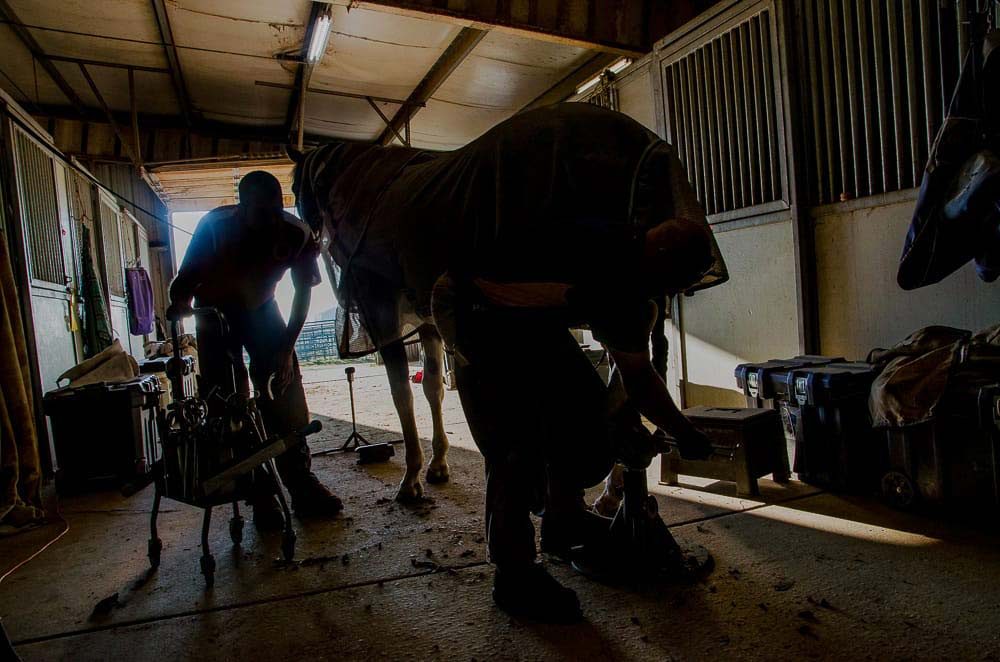The past year has been interesting, to say the least.
While the COVID-19 pandemic has resulted in restrictions in our daily lives, it also has been one of the busiest years within the farrier industry as horse owners spent more time with their mounts. With increased business comes a greater need for hoof-care education. As the year comes to a close, American Farriers Journal editors compiled the articles that you read most from each month in 2020.
1. Wrongful Death Ruling Empowers Farriers
The tragic death of California farrier Pat Barrett continues to resonate with American Farriers Journal readers more than 5 years after a California Court of Appeals dismissed a wrongful death lawsuit against a hoof-care client.
Barrett, a farrier for more than 45 years, and his assistant entered a rocky corral to catch James Leeech’s horses. While trying to secure a horse, Barrett was struck by the horse, causing him to fall and strike his head on a rock in the corral. His injuries were fatal.
While Nancy Barrett, Pat’s widow, argued that the horse owner was liable for failing to secure or restrain horses for the farrier, the court disagreed.
“Securing the horses was an essential part of the job for which the farrier Patrick was hired,” according to the court documents. “The owner had no duty to secure the horses once he gave up care and control to the specialist.”
2. Body Mass and Height Influence Horses’ Feet

The hoof capsule has been repeatedly documented as a smart structure; a structure that has the capability of adapting to the loading events it experiences repeatedly.
By definition, a smart structure is one that is considered intelligent or responsive to the environmental factors it faces. Furthermore, the hoof as a smart structure has been described as being “intimately and inextricably linked” to the correct functioning of other structures in the body. The responses of the hoof should therefore actively support its role in locomotion through its ability to shock absorb and provide leverage. Adaptations to hoof conformation directly influence the interaction between the hoof and the ground surface, and consequently, the loading forces experienced. These loading forces, in turn, influence the shape of the smart structure further; creating a cyclic interaction. Many factors influencing the geometry of the hoof capsule are considered to be primarily extrinsic, such as environmental stressors, the intensity of the workload, the surface being worked on, or the trimming or shoeing practices. Intrinsic factors, such as body size, have been less thoroughly considered.
Through optimizing an individual horse’s hoof conformation, trimming or farriery interventions aim to positively influence the biomechanics and loading patterns of the foot. Subtle changes in the shape of the hoof can impact how the foot moves during locomotion.
3. Basic Tips for Borium

Borium is a lot harder than Jello, but it does have one thing in common with the potluck staple: It’s actually a brand name that typically gets applied to a whole class of products.
Borium is probably the best-known name among the hard-facing products that farriers add to horseshoes for added traction or to extend shoe life. It’s easy for the novice farrier to get a bit confused, so here are some of the basics regarding hard-facing products, drawn from past articles that have appeared in American Farriers Journal articles.
4. How to Treat Hoof Abscesses

Hoof abscesses are probably the most common cause of acute severe lameness in horses encountered by veterinarians and farriers. A hoof abscess can be defined as a localized accumulation of purulent exudate located between the germinal and keratinized layers of the epithelium, most commonly subsolar (beneath the sole) or submural (beneath the hoof wall).
Organisms that are responsible for a hoof abscess gain entry through the hoof capsule (epidermis) into the inner subsolar/submural tissue (dermis) where the organisms propagate and initiate the formation of an abscess. Foreign matter (such as gravel, dirt, sand and manure coupled with infectious agents such as bacteria or fungal elements) generally gain entry into the hoof capsule through a break or fissure in the sole-wall junction somewhere on the solar surface of the foot.
5. Shoeing for Hind End Lamenesses

When discussion turns to equine lameness issues, invariably the front feet and legs get the lion’s share of attention.
While front end lameness is more prevalent than in the hind, having sound, fully functional hind legs and feet are essential to any horse.
The hindquarters have three basic functions — they are used to propel the horse, to stop that forward progress and to be a pivot point to change direction. In the course of a horse’s life, the hindquarters undergo a lot of abuse and can wear out and break down.
Often, less attention is given to shoeing the hind feet than the front feet in the belief that the front feet are more important. Obviously, this is not the case. This article will attempt to offer some insight into how to keep a horse sound and ways to help it when normal shoeing is not enough.
6. 2020 Summit Mail-In Forging Exercise: Sidebone Shoe
International Horseshoeing Hall of Fame member Craig Trnka of Edgewood, N.M., demonstrates how to make the sidetone shoe for the 2020 Summit Mail-In Forging Exercise.
7. When feeding alfalfa to insulin-resistant horses, is there any difference between bales, cubes and pellets?
With insulin deregulated horses, alfalfa, like any other forage should be lab analyzed to understand its composition and to balance it with the complete diet plan.
Alfalfa’s protein, sugars and starches will vary based on harvesting techniques, seasonal timing, weather, soil fertility and the maturity of plant bloom when cut. Fluctuations in quality may be due to the stage of plant bloom at the time of cutting — early bloom (20% plus crude protein), mid-bloom, or late bloom (generally yielding 15% crude protein.)
8. Alfalfa and the Insulin Resistant Horse
Alfalfa can be an excellent addition to most horses’ diets, even for those that are insulin resistant.
Equine nutritionist Juliet Getty often recommends feeding it because it boosts the overall protein quality of a grass-hay diet and, in general, enhances the horse’s muscle tone, immune system and overall health. Some people, though, just don’t want to feed alfalfa — they believe it causes laminitis. After years of working with horses, it appears that it may, in fact, lead to laminitis in some horses.
9. Identifying a Subsolar Abscess isn’t Always Easy
Although abscesses are common, sometimes identifying one requires a little bit of detective work on the part of the farrier.
Many horses are so lame that they won’t even put weight on the affected foot, while others may walk with a pronounced limp, says Henry Heymering, a member of the International Horseshoeing Hall of Fame.
“I want to see the horse walk so I can see not only which foot it is, but how they’re putting the foot down,” explains the Frederick, Md., farrier. “If it’s an abscess on the outside of the foot, the horse will try to walk on the inside and vice versa. But if it’s at the toe or the heel, they may just walk on the toe.”
10. Q&A: John Sagaria Discusses His Award-Winning Progress in Blacksmithing

Deciding the winner of the American Farriers Journal Most Improved Award in a World Championship Blacksmiths season isn’t always a straightforward process. While a noticeable increase in contest points is an important factor, it is also based on a farrier’s continued dedication to the craft, self-improvement and camaraderie.
“We look at who has steadily improved throughout the year with the points standing,” says World Championship Blacksmiths President and International Horseshoeing Hall of Famer Craig Trnka. “They may have slid backward on a contest, but for the most part have improved their overall placings progressively over the season. There can be ties, so the WCB owners look at personal growth and dedication towards others as well. It’s a tough decision because there are usually several in the running, and you want them all to win it.”
John Sagaria, the 2019 recipient of the award, talks about his development as a farrier and the ways he has improved at the forge.








Post a comment
Report Abusive Comment